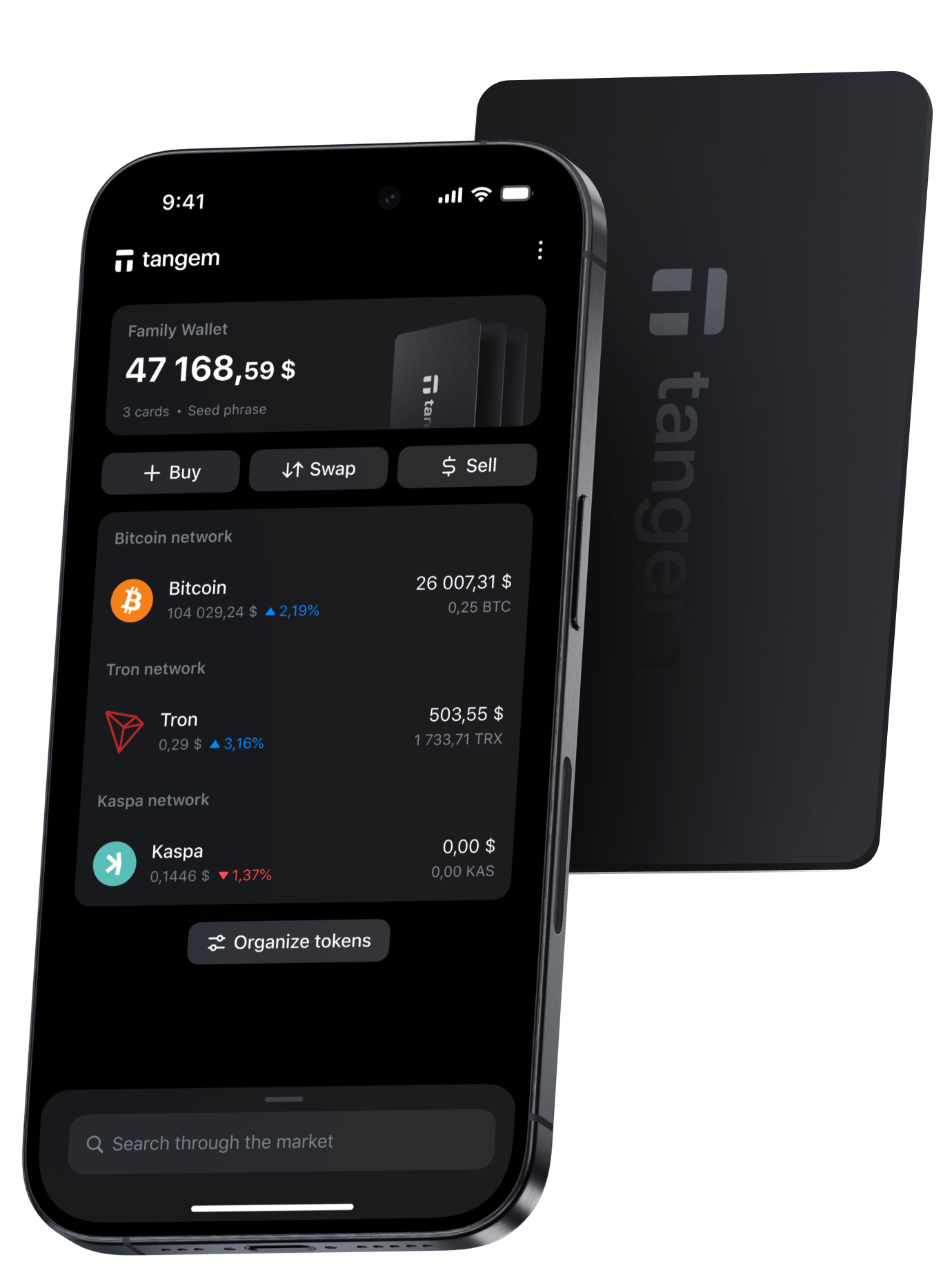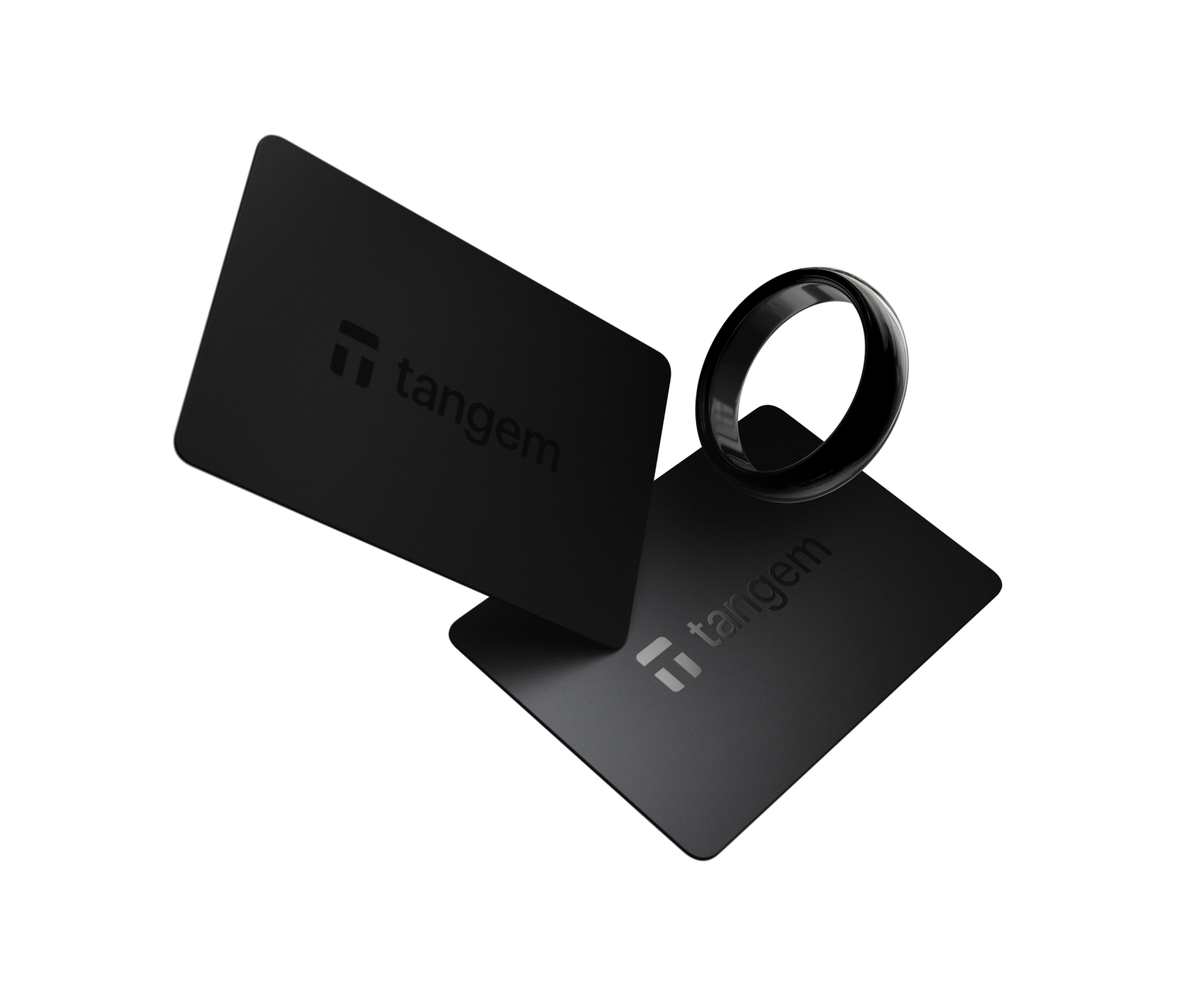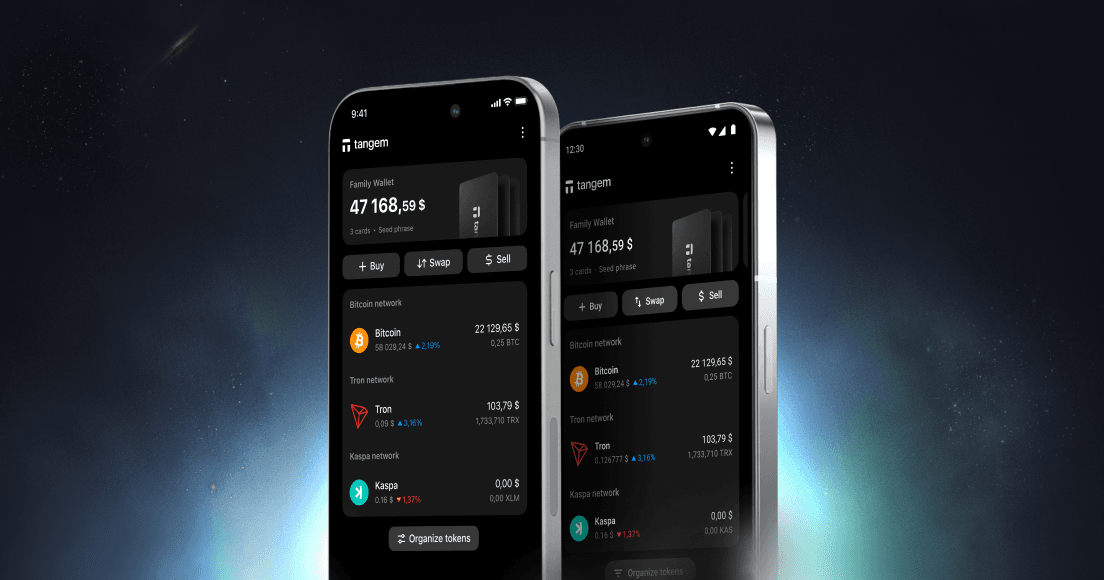
Mochi wallet
The most secure hardware wallet for your Mochi
Guard your Mochi with Tangem, the choice for secure, self-custodial storage loved by crypto enthusiasts worldwide.

How to secure your Mochi with Tangem?
When you buy or hold Mochi in Tangem, it secures your private keys in many ways:
- With the seedless setup and smart backups on extra devices, your Bitcoin is safe and accessible only to you.
- Tangem is IP69K water and dustproof, built to protect against extreme temperatures, EMPs, ESCs, and X-RAYS.
- An access code and biometric authentication protect against unauthorized access.
- Private keys are generated and stored on its EAL6+ CC secure element.
How to get a Mochi Crypto Wallet?
Tangem products are for everyone, from beginners to experts. They keep your crypto safe and easy to manage. With cutting-edge technology, Tangem lets you control and protect your digital assets.
Get TangemWhy choose Mochi wallet with Tangem.
What is Mochi (MOCHI)?
Mochi (MOCHI) is a unique community-driven cryptocurrency inspired by Brian's cherished cat, making it a sibling coin to $TOSHI. Tradable on SushiSwap, Mochi seeks to cultivate a connected community and aspires to become the leading meme coin within the basechain ecosystem.
What is a Mochi wallet?
A Mochi wallet is a secure digital tool used to manage your private keys, which are essential for accessing your MOCHI address on the blockchain. While it doesn't physically hold your MOCHI, it is crucial for generating and storing the keys needed to send, receive, and manage your MOCHI funds. Essentially, a Mochi wallet is your gateway to interacting with your MOCHI assets.
How does a Mochi wallet work?
Mochi wallets operate using a system of public and private keys to manage blockchain accounts. The private key, which should remain confidential, allows access to your MOCHI accounts, while the public key can be shared for receiving MOCHI. To withdraw any MOCHI funds, you need the correct private key. Tangem Wallet ensures your private keys are securely generated and stored within its hardware chip.
What are the types of Mochi wallets?
Exchange Mochi Wallets:
Platforms like Coinbase, Binance, and Kraken provide opportunities to purchase MOCHI using fiat currencies. These are custodial wallets, meaning the platform holds the private keys, which poses a risk of losing access.Software Mochi Wallets:
These wallets are installed on your devices and manage the MOCHI private keys. They're user-friendly but susceptible to online threats like malware. Types include mobile, desktop, and browser wallets.Mobile Mochi Wallets:
Applications designed to manage your MOCHI on smartphones for convenience.Desktop Mochi Wallets:
Installed on computers, where they store the private keys on your hard drive or SSD.Hardware Mochi Wallets:
Offline storage solutions, such as Tangem, that offer robust protection against cyber threats.
How to Choose the Best Mochi Wallet
Selecting the best wallet for your needs involves evaluating factors like ease of use, security, and reliability. For those looking to protect large amounts of MOCHI and safeguard against online attacks, hardware wallets like Tangem are highly recommended.

Tangem supports other cryptocurrencies
Reliability and convenience at your fingertips. Manage thousands of cryptocurrencies with peace of mind anywhere and anytime
See all supported cryptosMochi FAQ
- You can buy Mochi on major cryptocurrency exchanges like Binance, Coinbase, or Kraken. You can also use P2P platforms or specialized exchange services. For safe storage, it is recommended to use a reliable wallet like Tangem.
- For long-term storage of Mochi, a cold wallet such as Tangem is the best choice, offering a high level of security. For active transactions, a hot wallet is more convenient but less protected from hacking.
- Transfer fees for Mochi depend on the blockchain network load and the exchange or wallet used. Typically, this includes a network fee (gas fee) and possibly additional fees from the platform.
- To create a wallet for Mochi, install the Tangem app, follow the instructions to set up a cold wallet, and generate a unique address for storing your cryptocurrency.

Something went wrong
🎉 You've unlocked 15% OFF!
Use 15OFFRING — valid for Tangem Ring till 30/09/2025 | Tap & Get

